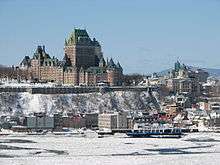Renaissance architecture
Renaissance architecture is a neo-classic style, inspired by the examples of ancient Greek and Roman architecture and classical ideas of symmetry, clarity, beauty and harmony.
Understand
The Renaissance was a time of heightened interest in classical secular culture, art, philosophy and mythology. It was also associated with Protagoras' principle that "man is the measure of all things". This was as true of Renaissance religious art and architecture as it was of Renaissance secular art and architecture.
In some ways, the Renaissance was an outgrowth of the Gothic period and style, which in painting and sculpture, represented the human form more anatomically accurately than in the prior Romanesque period. But whereas, for example, Gothic cathedrals are meant to inspire awe at the power of God and the Church and make individuals who enter cathedrals feel small in comparison to the vast interiors and vaulted ceilings, Renaissance churches and secular buildings are meant to relax the individual, who has a comforting feeling that all is harmonious and in a human scale.
Elements of Renaissance architecture
See
Renaissance architecture
France


- The Château de Montsoreau, in the Loire Valley, is one of the first Renaissance buildings in France, and the only one to have been built in the Loire riverbed.
- The Château de Chambord, in the Loire Valley, is perhaps the most famous Renaissance château in France.
- The Château de Chenonceau, also in the Loire Valley, is another famous Renaissance château.
Germany
- Schloss Johannisburg Aschaffenburg.
Italy
- See also: Medieval and Renaissance Italy
- Florence is the city that was the foremost and earliest wellspring of the Renaissance, in large part because of the large size and influence of its mercantile class, which took over the city early in the persons of the Medici family.
- Venice was another very important early Renaissance city, and was refuge to Greek Orthodox Christian refugees from the fall of Constantinople in 1453 and Jewish refugees from the Spanish Reconquista in 1492. Venice was an early center of printing, and the source of many new editions of ancient Greek texts, both in translations to Latin and Italian and in ancient Greek for Humanists who had devoted themselves to the study of such texts in their original language.
- Mantua - The city of the Gonzaga family. UNESCO World Heritage site.
- Rome - St. Peter's Basilica in the Vatican was originally envisioned and constructed as a Renaissance cathedral, but its nave was lengthened in Baroque style in the early 17th century.
Poland
Zamość is known for its Renaissance buildings, including its town hall.
Czech Republic
Neo-Renaissance architecture

Neo-Renaissance architecture began and flourished starting in the 19th century. One aspect of this style which travellers are likely to encounter is the Châteauesque architecture, inspired by the Renaissance châteaux of the Loire Valley, which was used in the construction of various grand hotels and estates open to the public in the United States, Canada and Europe.